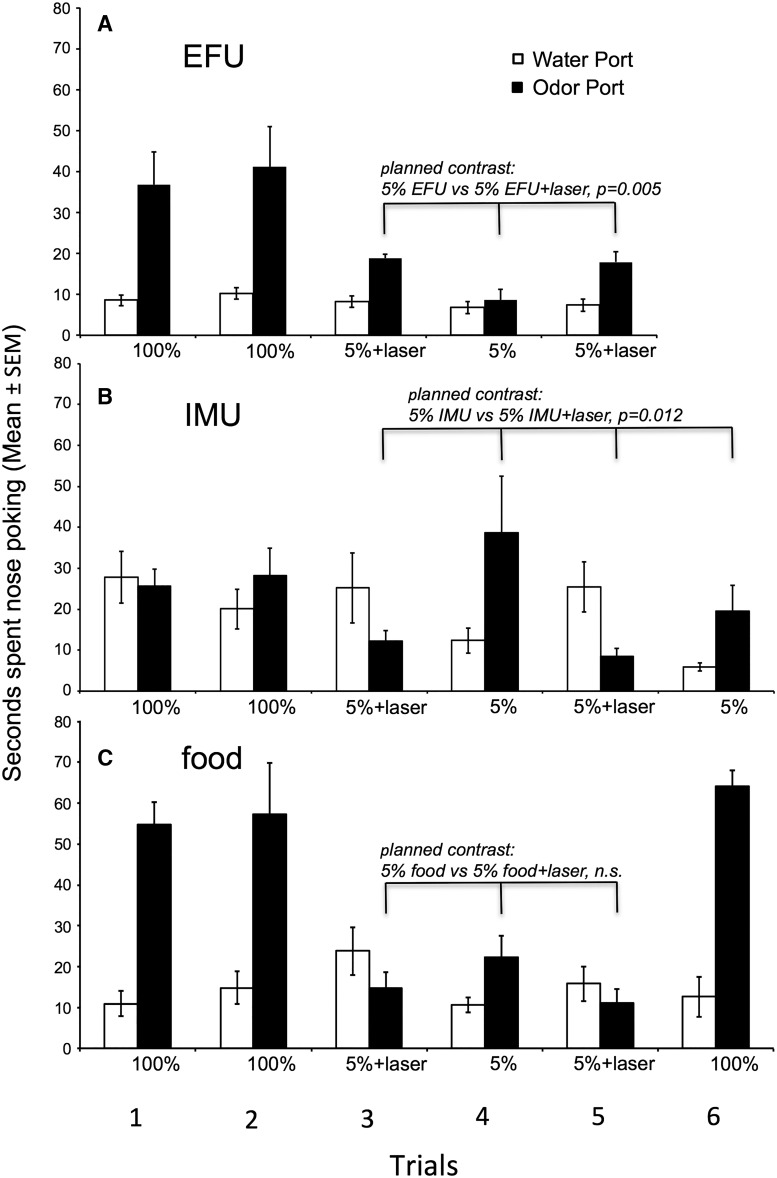Figure 4.
Effect of optogenetic stimulation of the AOB on the preference of male mice (group 1) to investigate (nose poke) ports containing water versus one of three different odors in trials given on separate days. Subjects were permitted nasal access to odors/water in all trials. A, Overall, male subjects preferred to investigate female urinary odors over water (main effect of odor port). A planned contrast revealed that optogenetic AOB stimulation significantly augmented males’ preference for 5% EFU compared with 5% EFU alone. Other planned contrasts (not indicated) showed that males investigated 100% EFU more than either 5% EFU or 5% EFU coupled with laser. B, Overall, male subjects showed no preference to investigate IMU over water (no main effect of odor port). A planned contrast showed that optogenetic AOB stimulation significantly reduced males’ investigation of 5% IMU relative to 5% IMU alone. An additional planned contrast (not indicated) showed that there was no difference in the investigation of 100% IMU versus 5% IMU. C, Male subjects preferred to investigate food odors over water (main effect of odor port). A planned contrast showed that pairing optogenetic AOB stimulation with 5% food odors failed to affect males’ investigation of this stimulus.

